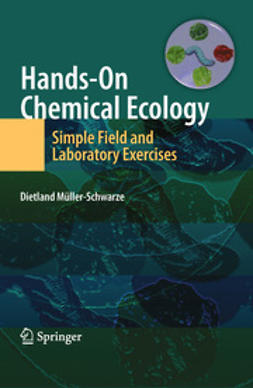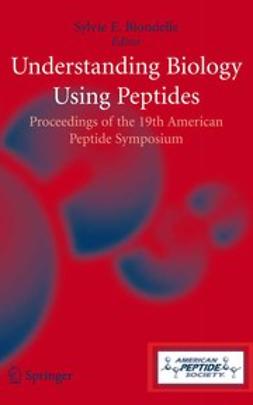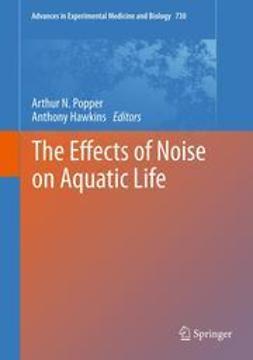LeMaster, Michael P.
Chemical Signals in Vertebrates 10
1. Thirty years on the odor trail: From the first to the tenth international symposium on chemical signals in vertebrates
Dietland Müller-Schwarze
2. Pheromones: Convergence and contrasts in insects and vertebrates
Tristram D. Wyatt
Part I. Intraspecific Behavior
3. The discovery and characterisation of splendipherin, the first anuran sex pheromone
Margit A. Apponyi, John H. Bowie
4. Chemically mediated mate recognition in the tailed frog (
Matthew J. Asay, Polly G. Harowicz, Lixing Su
5. Responses to sex- and species-specific chemical signals in allopatric and sympatric salamander species
Catherine A. Palmer, Lynne D. Houck
6. The pheromonal repelling response in red-spotted newts (
Daesik Parkl, Heather L. Eisthen, Catherine R. Propper
7. The effects of cloacal secretions on brown tree snake behavior
Michael J. Greene, Robert T. Mason
8. Species and sub-species recognition in the North American beaver
Anne Marie Peterson, Lixing Sun, Frank Rosell
9. Self-grooming in meadow voles
Michael H. Ferkin
10. Protein content of male diet does not influence proceptive or receptive behavior in female meadow voles,
Andrew A. Pierce, Michael H. Ferkin, Nerav P. Patel
11. The signalling of competitive ability by male house mice
Nicholas Malone, Stuart D. Armstrong, Richard E. Humphries, Robert J. Beynon, Jane L. Hurst
12. A possible function for female enurination in the mara,
Deborah S. Ottway, Sheila J. Pankhurst, John S. Waterhouse
13. The evolution of perfume-blending and wing sacs in emballonurid bats
Christian C. Yoigt
14. Behavioral responsiveness of captive giant pandas (
Dingzhen Liu, Guiquan Zhang, Rongping Wei, Hemin Zhang, Jiming Fang, Ruyong Sun
15. Chemical signals in giant panda urine (
M. Dehnhard, T. Hildebrandt, T. Knauf, A. Ochs, J. Ringleb, F. Göritz
16. Chemical communication of musth in captive male asian elephants,
Nancy L. Scott, L. E. L. Rasmussen
17. Chemical analysis of preovulatory female african elephant urine: A search for putative pheromones
Thomas E. Goodwin, L. E. L. Rasmussen, Bruce A. Schulte, Patrick A. Brown, Ben L. Davis, Whitney M. Dill, Nichole C. Dowdy, Adam R. Hicks, Richard G. Morshedi, Daniel Mwanza, Helen Loizi
18. Assessing chemical communication in elephants
Bruce A. Schulte, Kathryn Bagley, Maureen Correll, Amy Gray, Sarah M. Heineman, Helen Loizi, Michelle Malament, Nancy L. Scott, Barbara E. Slade, Lauren Stanley, Thomas E. Goodwin, L. E. L. Rasmussen
19. The gland and the sac — the preorbital apparatus of muntjacs
Susan J. Rehorek, Willem J. Hillenius, John Kennaugh, Norma Chapman
20. The chemistry of scent marking in two lemurs:
R. Andrew Hayes, Toni-Lyn Morelli, Patricia C. Wright
21. Soiled bedding from group-housed females exerts strong influence on male reproductive condition
Sachiko Koyama, Shinji Kamimura
22. The role of the major histocompatibility complex in scent communication
Michael D. Thom, Robert J. Beynon, Jane L. Hurst
23. Characterisation of proteins in scent marks: Proteomics meets semiochemistry
Duncan H. L. Robertson, Sarah Cheetham, Stuart Armstrong, Jane L. Hurst, Robert J. Beynon
24. The “scents” of ownership
Jane L. Hurst, Michael D. Thom, Charlotte M. Nevison, Richard E. Humphries, Robert J. Beynon
25. The role of scent in inter-male aggression in house mice & laboratory mice
Julia C. Lacey, Jane L. Hurst
26. Chemical signals and vomeronasal system function in axolotls (
Heather L. Eisthen, Daesik Park
27. From the eye to the nose: Ancient orbital to vomeronasal communication in tetrapods?
Willem J. Hillenius, Susan J. Rehorek
28. Prey chemical signal transduction in the vomeronasal system of garter snakes
Mimi Halpern, Angel R. Cinelli, Dalton Wang
29. Mode of delivery of prey-derived chemoattractants to the olfactory and vomeronasal epithelia results in differential firing of mitral cells in the main and accessory olfactory bulbs of garter snakes
Cheng-Shu Li, John Kubie, Mimi Halpern
30. Communication by mosaic signals: Individual recognition and underlying neural mechanisms
Robert E. Johnston
31. Sexual dimorphism in the accessory olfactory bulb and vomeronasal organ of the gray short-tailed opossum,
Jennifer H. Mansfield, Wei Quan, Changping Jia, Mimi Halpern
32. The neurobiology of odor-based sexual preference the case of the golden hamster
Aras Petrulis
33. Retention of olfactory memories by newborn infants
Richard H. Porter, John J. Rieser
34. Human sweaty smell does not affect women’s menstrual cycle
Lixing Sun, Wendy A. Williams, Corinna Avalos
Part II. Interspecific Responses
35. Local predation risk assessment based on low concentration chemical alarm cues in prey fishes: Evidence for threat-sensitivity
Grant E. Brown
36. Learned recognition of heterospecific alarm cues by prey fishes: A case study of minnows and stickleback
M. S. Pollock, D. P. Chivers, R. C. Kusch, R. J. Tremaine, R. G. Friesen, X. Zhao, G. E. Brown
37. The response of prey fishes to chemical alarm cues: What recent field experiments reveal about the old testing paradigm
Robyn J. Tremaine, Michael S. Pollock, Robert G. Friesen, Robin C. Kusch, Douglas P. Chivers
38. Response of juvenile goldfish (
Xiaoxia Zhao, Douglas P. Chivers
39. The effects of predation on phenotypic and life history variation in an aquatic vertebrate
Robin C. Kusch, Reehan S. Mirza, Michael S. Pollock, Robyn J. Tremaine, Douglas P. Chivers
40. Nocturnal shift in the antipredator response to predator-diet cues in laboratory and field trials
Aaron M. Sullivan, Dale M. Madison, John C. Maerz
41. Long-term persistence of a salamander anti-predator cue
Michael P. Machura, Dale M. Madison
42. Decline in avoidance of predator chemical cues: Habituation or biorhythm shift?
Dale M. Madison, John C. Maerz, Aaron M. Sullivan
43. Chemically mediated life-history shifts in embryonic amphibians
Reehan S. Mirza, Joseph M. Kiesecker
44. Latent alarm signals: Are they present in vertebrates?
Ole B. Stabell
45. Blood is not a cue for poststrike trailing in rattlesnakes
Tamara L. Smith, Kenneth V. Kardong
46. Rattlesnakes can use airborne cues during post-strike prey relocation
M. Rockwell Parker, Kenneth V. Kardong
47. The sense of smell in procellariiforms: An overview and new directions
Gregory B. Cunningham, Gabrielle A. Nevitt
48. Cottontails and gopherweed: Anti-feeding compounds from a spurge
Dietland Müller-Schwarze, José Giner
Nyckelord: Life Sciences, Ecology, Evolutionary Biology, Vertebrates, Zoology
- Författare
- LeMaster, Michael P.
- Mason, Robert T.
- Müller-Schwarze, Dietland
- Utgivare
- Springer
- Utgivningsår
- 2005
- Språk
- en
- Utgåva
- 1
- Sidantal
- 444 sidor
- Kategori
- Naturvetenskaper
- Format
- E-bok
- eISBN (PDF)
- 9780387251608











